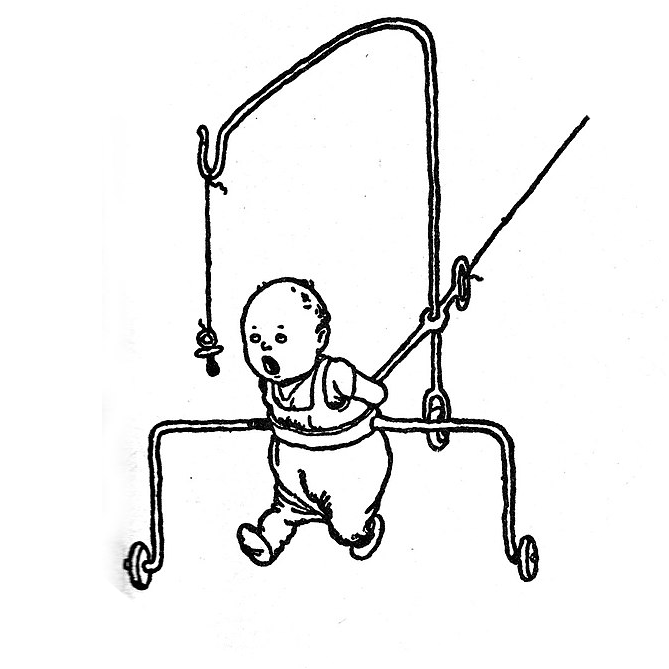I wonder how a (software) daemon would fit in. It would just take care of various background stuff and nobody would notice it until something goes wrong.
Who reads this anyway? Nobody, that’s who. I could write just about anything here, and it wouldn’t make a difference. As a matter of fact, I’m kinda curious to find out how much text can you dump in here. If you’re like really verbose, you could go on and on about any pointless…[no more than this]
- 0 Posts
- 674 Comments
Fair enough. We’re going to assume it’s completely safe until proven otherwise. Vulcanologists can tell you that the viscosity can be pretty high, so there could be a choking hazard though. Further study would be needed to determine the exact nature of potential hazards.
Be careful though. If you keep on digging deeper and deeper, you’ll find magma. That’s not a bad deal either, because you can use that heat to run a geothermal power plant.
Also, there’s the actual Chad, which is bigger than Texas.

 3·11 days ago
3·11 days agoSome times you bump into these special connectors that follow no standards at all. If a manufacturer can’t squeeze an already custom board into a case why not just spit it in half and stack them on top of each other.
At least that follows some mathematical logic. Mohs scale of hardness is pretty close to pT scale in that sense, but there’s no mathematics or logic involved. It’s just a list of standard materials that define specific points on the scale. When you compare the results with a more logical scale, it looks neatly non-linar at first glance, but the closer you look, the less sense it makes. It’s just a list of exceptions to whatever rule you may have had in mind.
Doesn’t mean it’s a useless scale. You can totally use it for qualitative assessment of hardness, but steer clear of it when numbers and decimals actually matter.
It’s only fair to give credit when credit is due. Doesn’t mean I like that unit, but I can see where they’re coming from.
You could totally make an extra cursed temperature scale. Randall proposed the °X scale, but maybe we can do better than that. That was pretty cursed because it defines three points based on statistics observed on of Earth and uses linear interpolation to connect the dots.
I propose an extra cursed system that uses completely fictional values. Let’s take -π as the melting point of unicorns and +GrahamsNumber as the peak temperature in the core of the hypothetical planet Vulcan. Between the two points you can fit any seventh degree polynomial you like in order to get the values that fit your needs. On Wednesdays you can use a sine wave too.
I think it’s about time we switched to using seconds as the universal time unit. I really hate the messy base 60 conversions we inherited from the Babylonians. Also, month is such a broken unit, and it just makes many calculations unnecessarily complicated.
In the Middle East, the winters are brutally cold and the locals suffer. Tourists from colder regions come there to enjoy their winter vacation in December or January, because it’s paradoxically quite warm. They only pack their normal spring clothes because it isn’t really that cold in their opinion. You know, a thin coat, maybe a thin summer beanie. You’ll probably be ok without any mittens. Also, you can wear normal shoes which is nice.
Extreme weather gear is considered just normal winter clothes in some parts of the world.
I don’t really use the Fahrenheit scale for anything, but when I bump into it, I prefer to think of those values as: 0°F is a cold winter and 100°F is a hot summer weather. Makes sense for the human experience, which makes it a very practical unit. The original definition was more technical than that, but it was also severely limited by the technology at the time, so it had some flaws.
You also have to look at these units in the proper historical context. Measurements were a complete mess, so having at least something that sort of makes some sense and is somewhat repeatable, is a clear improvement. Both, Fahrenheit and Celcius scales totally addressed those concerns, and that makes them both good enough. Absolute zero and plank temperature weren’t even known back then, so what can you expect.
When it comes to using these units in serious scientific and engineering applications, you run into problems, but the kelvin scale addresses those pretty well. It’s not exactly elegant, but at least it’s functional. Because of historical baggage, we’re pretty much stuck with these units, but it could be worse.
Yeah, well that’s a cultural thing really. Celcius and fahrenheit scales are both quite arbitrary. The kelvin scale uses absolute zero, which totally makes sense, but the other fixed point is pretty arbitrary when you think of it. The fahrenheit scale makes sense for the human experience of weather, while the celcius scale makes sense for generally life on Earth where water plays an important role. Neither of them are particularly universal, and they both suck in their unique ways.
see also: natural units
(Edit)
Life Pro Tip: If you take the piss out of two units at the same time, you can make everyone equally angry.
LOL, the original Celsius scale really is 10/0 cursed.

 9·15 days ago
9·15 days agoIn summary: You and me, we’re in the same tribe, and we hold the superior worldview. Those people over there in the out-group are wrong. They also do things the wrong way, because they aren’t in our tribe.
Hearing this sort of talk pulls some strings in the human mind. There’s this interesting default setting that says tribalism = TRUE.

 10·16 days ago
10·16 days agoWhat happened in Iceland? I really thought they would have inherited this kind of stuff from Norway.

 3·16 days ago
3·16 days agoWhen in doubt, always guess it’s a Swedish loanword. You’ll be right surprisingly often.

 71·17 days ago
71·17 days ago
LOL. Those 3 weeks must have been really exciting at Llama Group. I can only imagine how the conversion went when the engineers tried to explain what FOSS means and the CEO understood none of it.

 6·20 days ago
6·20 days agoIs this one of those cases where you would need to make a parallel universe and let it run for billions of years to prove this idea?


I can imagine how these workers would constantly monitor the temperature of the fire and add more coal when necessary.